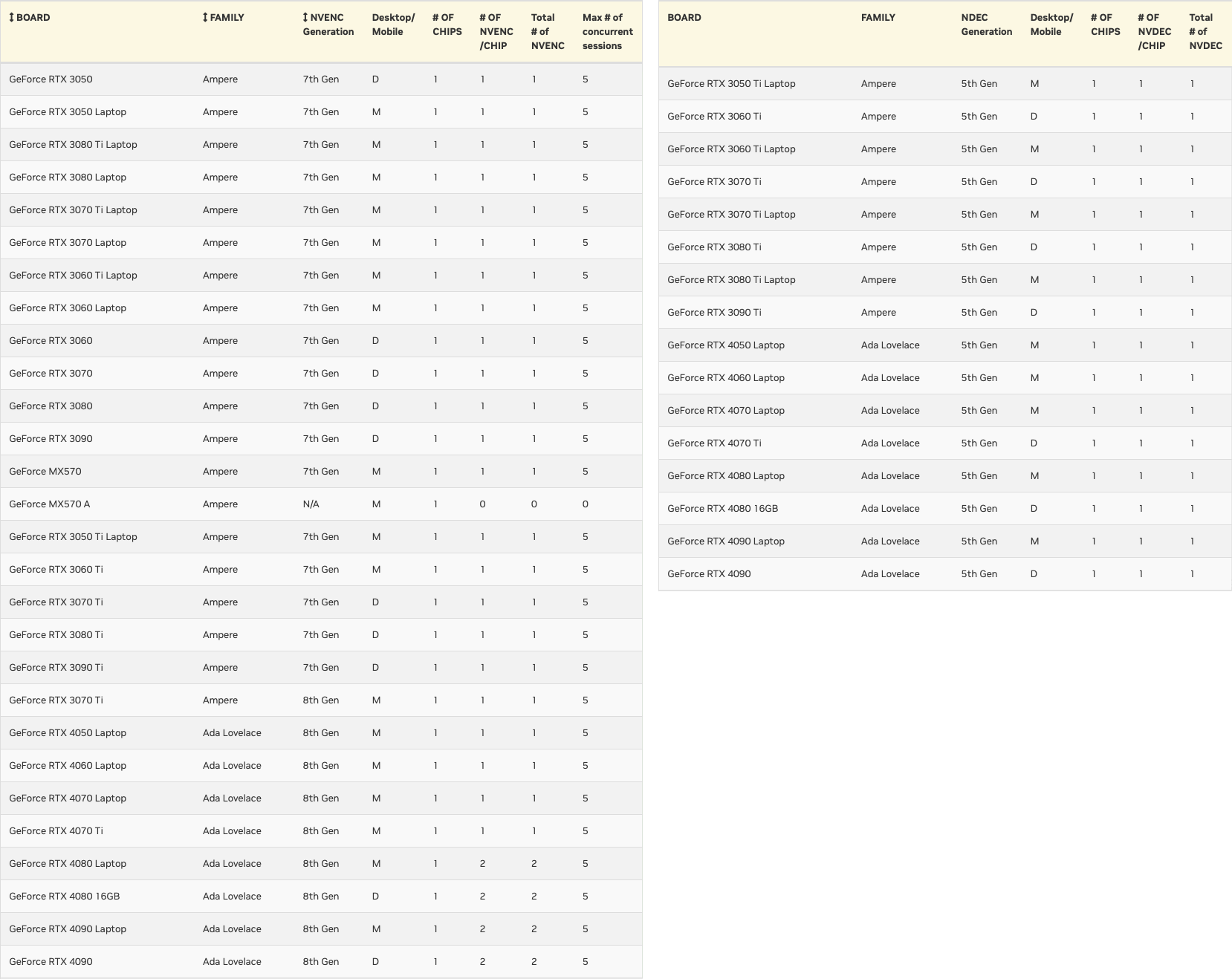
Nvidia has quietly removed some of the concurrent video encoding limitations from its consumer graphics processing units, so they can now encode up to five simultaneous streams. The move may simplify the life of video enthusiasts, but Nvidia's data center grade and professional GPUs will continue to have an edge over consumer products as now Nvidia does not restrict the number of concurrent sessions on them. Obviously, the speed of encoding can suffer with more simultaneous encodes.
Nvidia has increased the number of concurrent NVENC encodes on consumer GPUs from three to five, according to the company's own Video Encode and Decode GPU Support Matrix. This is effective for dozens of products based on the Maxwell 2nd Gen, Pascal, Turing, Ampere, and Ada Lovelace microarchitectures (except for some MX-series products) and released in the last eight years or so.
The number of concurrent NVDEC decodes isn't restricted, though if you're after real-time decoding, there are limits to how many streams can be handled at once. Nvidia provides a table showing the relative decode speeds of various GPUs by codec, though it doesn't indicate the resolution of those streams. Still, even second generation Maxwell GPUs could do over 400 fps of decode, enough for at least six simultaneous 1080p (?) streams — assuming you don't run out of VRAM.
The change does not affect the number of NVENC and NVDEC hardware units activated in Nvidia's consumer GPUs. For example, Nvidia's latest AD102 graphics processor, based on the Ada Lovelace architecture, features three hardware NVENC encoders and three NVDEC decoders. All three are enabled on Nvidia's RTX 6000 Ada and L40 boards for workstations and data centers, but only two are active on consumer-grade GeForce RTX 4090. The AD103 and AD104 each have two NVENC and four NVDEC units, but GeForce cards only enable two of the NVDEC units.

Historically, Nvidia has restricted the number of concurrent encoding sessions on all of its graphics cards. Consumer-oriented GeForce boards supported up to three simultaneous NVENC video encoding sessions while Nvidia's workstation and data center solutions running the same silicon and aimed at ProViz, video streaming services, games streaming services, and virtual desktop infrastructure (VDI) could support 11–17 concurrent NVENC sessions depending on the quality and hardware. It turned out a couple of years ago that Nvidia's restrictions could be removed by a relatively simple hack.
But Nvidia's stance on NVENC and NVDEC limitations has evidently changed a bit. Now, consumer GPU support up to five concurrent NVENC encode sessions. Workstation-grade and data center-grade boards do not have any restrictions and the actual number of concurrent sessions depends on actual hardware capabilities, codec choice, and video quality.







